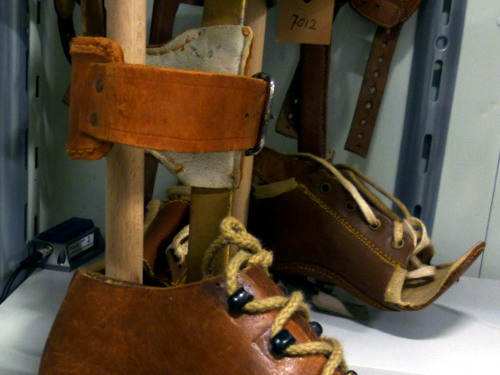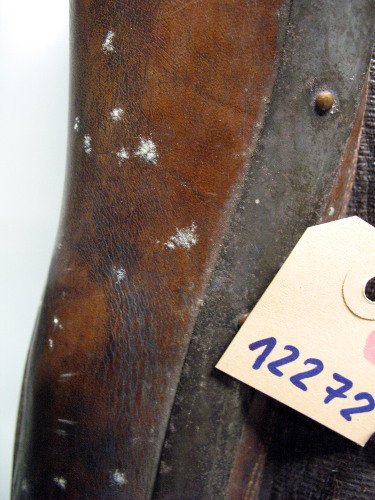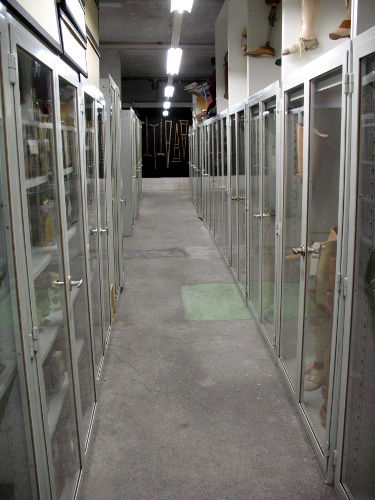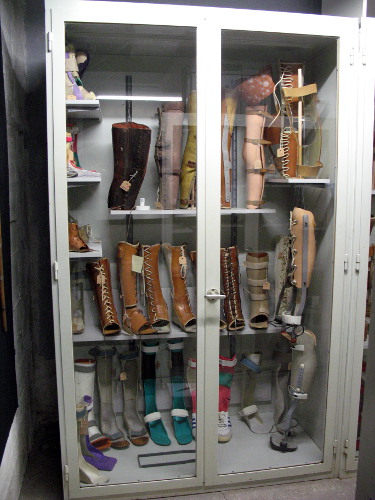Climate monitoring at the historic Zurich medical collection
Preventive conservation of art and cultural assets by Prevart GmbH
Museums often store unique objects in their archives. In addition to their aesthetic value these also provide exciting information about the past. With the help of preventive conservation, it should be possible to maintain these works of art and cultural assets for the enjoyment of as many future generations as possible.. In such applications, dataloggers help to monitor environmental conditions such as temperature, humidity and lighting conditions over a long period of time. The objective here is to derive appropriate measures to ensure the best possible preservation of the objects.
The Winterthur company Prevart GmbH is a specialist in the field of cultural asset preservation and museum planning. It prepares comprehensive concepts for its clients in the sector of preventive conservation and provides consultation and advice during implementation of the measures. A key point here is the monitoring of environmental conditions. Museums endeavour to keep their rooms as climatically stable as possible in order to protect the cultural assets stored there. For the majority of the objects in storage, a relative humidity of between 45% and 55% has proven suitable. Despite these endeavours, local mould formation still occurs frequently. Materials react very differently to variations in temperature and relative humidity.
Mould formation threatens historic collections
Taking the orthopaedic technical reference collection of the historic Zurich medical collection as an example, the difficulties facing many collections in respect of the creation of microclimate zones (in the high relative humidity zone) can be demonstrated. The room, located in a cellar and next to an external wall, is fitted with space-saving rows of metal showcases with glass doors.  A dehumidifier keeps the humidity in the room stable. Despite this however, there has been serious mould formation on leather objects inside the showcases. It is suspected that the cases are relatively airtight which means that the air exchange with the room as a whole is rather restricted. It is also suspected that the heat conductivity of the metal is a factor leading to the creation of the microclimate zones. It is possible that, during the transitions between the seasons, the wall areas of the metal cases cool down at a faster rate, leading to a local increase in relative humidity. The materials from which the cases are made are not hygroscopic, which means that the increased humidity can only be absorbed by the objects of the collection themselves. Once they absorb moisture, materials such as leather, wood and textiles only slowly lose this moisture again in a dry environment. Over an extended period this causes an increase in the material’s moisture content which could be sufficient to activate any mould spores that are already present.
A dehumidifier keeps the humidity in the room stable. Despite this however, there has been serious mould formation on leather objects inside the showcases. It is suspected that the cases are relatively airtight which means that the air exchange with the room as a whole is rather restricted. It is also suspected that the heat conductivity of the metal is a factor leading to the creation of the microclimate zones. It is possible that, during the transitions between the seasons, the wall areas of the metal cases cool down at a faster rate, leading to a local increase in relative humidity. The materials from which the cases are made are not hygroscopic, which means that the increased humidity can only be absorbed by the objects of the collection themselves. Once they absorb moisture, materials such as leather, wood and textiles only slowly lose this moisture again in a dry environment. Over an extended period this causes an increase in the material’s moisture content which could be sufficient to activate any mould spores that are already present.
Minimising the risk of damage through climate monitoring
 To test this hypothesis, long-term climate measurements are currently being carried out in 5 of the metal cases in parallel with the cleaning of the objects, cases and rooms. One case remains closed, one fully open, one slightly open, one open but fitted with dust protection of tissue paper and a further case closed but with moisture absorbing packs inside. The room climate is also measured. All measurements are taken at the same height above the floor and along the external wall. Six MSR145 dataloggers fitted with 900mA batteries are being used for these measurements. They allow uninterrupted measurements to be carried out over a period of one year, thanks to their high memory and battery capacities. The compact size of the loggers allows them to be placed unobtrusively inside the display cases and the long USB cable means that the data saved by the logger can be transferred to a PC each month without moving the device. Evaluation of the results to-date indicates that the cases will be closed again in future and that moisture absorbing packs will be placed inside the corner case – the one that is obviously most affected by ground cold. For approximately three weeks in summer the moisture absorbing packs are intended to reduce the peak humidity values of 60% RH to below 55% RH in future, just in this one corner case.
To test this hypothesis, long-term climate measurements are currently being carried out in 5 of the metal cases in parallel with the cleaning of the objects, cases and rooms. One case remains closed, one fully open, one slightly open, one open but fitted with dust protection of tissue paper and a further case closed but with moisture absorbing packs inside. The room climate is also measured. All measurements are taken at the same height above the floor and along the external wall. Six MSR145 dataloggers fitted with 900mA batteries are being used for these measurements. They allow uninterrupted measurements to be carried out over a period of one year, thanks to their high memory and battery capacities. The compact size of the loggers allows them to be placed unobtrusively inside the display cases and the long USB cable means that the data saved by the logger can be transferred to a PC each month without moving the device. Evaluation of the results to-date indicates that the cases will be closed again in future and that moisture absorbing packs will be placed inside the corner case – the one that is obviously most affected by ground cold. For approximately three weeks in summer the moisture absorbing packs are intended to reduce the peak humidity values of 60% RH to below 55% RH in future, just in this one corner case.
Prevart GmbH - Concepts for the preservation of cultural assets
Karin von Lerber, 20.10.2011
 Deutsch
Deutsch


